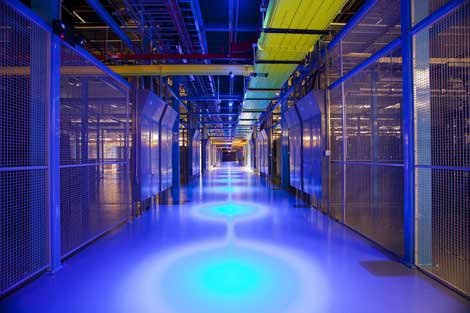Most companies are expanding their reliance on networks and cloud services. In turn, network and cloud service providers are utilizing multitenant data centers to fulfill their operational and business needs.
These data centers simplify how companies connect to networks and cloud services. They provide a scalable, reliable, high-performance, secure and distributed global platform that can provide multiple access methods to multiple cloud services from multiple sites.
Bridging networks and clouds
Multitenant data centers bring together many networks, clouds and IT services, giving enterprises both the flexibility to choose from best-of-breed offerings and the agility to consume multiple IT and network resources from under one roof, without having to build out data center capacity themselves.
For those enterprises taking advantage of this capability, it provides them with tremendous cost savings, an accelerated time to market and a competitive advantage in many instances.
Now that a vast range of IT resources are pooled in multitenant data centers across the globe, enterprises can improve the security, performance and reliability of their application services by connecting to service providers through direct business-to-business connections, rather than through the public Internet.
A significant number of enterprises have already achieved these benefits by establishing private connections to cloud services and standing up highly customized multi-cloud environments.
Bypassing the public Internet, private connections offer a higher-performing and more secure alternative that meets the needs of a dispersed user base. The demand for these types of connections is apparent, and market leaders have recently responded by deploying within multitenant data centers and offering private connectivity solutions like Amazon Direct Connect and Microsoft ExpressRoute.
Comprehensive business ecosystems make these offerings possible by enabling enterprises to connect to public, private or hybrid cloud solutions via a range of network providers – in Microsoft’s case that includes AT&T, BT, Level 3, and Verizon and others.
In short, companies are forming interconnected business ecosystems inside multitenant data centers, creating valuable benefits for all participants: Network service providers can tap into an aggregated pool of prospective customers, including cloud and managed IT providers seeking efficient network routes for faster service delivery, as well as enterprise IT departments seeking high-performance connections to cloud and managed IT services.
Cloud service providers gain access to enterprises worldwide, as well as to the networks that provide connectivity to those enterprises, ensuring reliable application performance and security.
Enterprises are able to connect to multiple cloud and network service providers and even to systems integrators and managed service providers who can help them architect turnkey solutions for complex data center deployments across multiple geographies.
The way in which enterprises consume network and cloud services is changing drastically and for the better. By leveraging business ecosystems within multitenant data centers, networks become more prevalent in the cloud market, cloud adoption barriers are removed and enterprises are less vulnerable to vendor lock-in.
The resources and tools needed to meet new business demands are already available, and you can find them in the multitenant data center.

